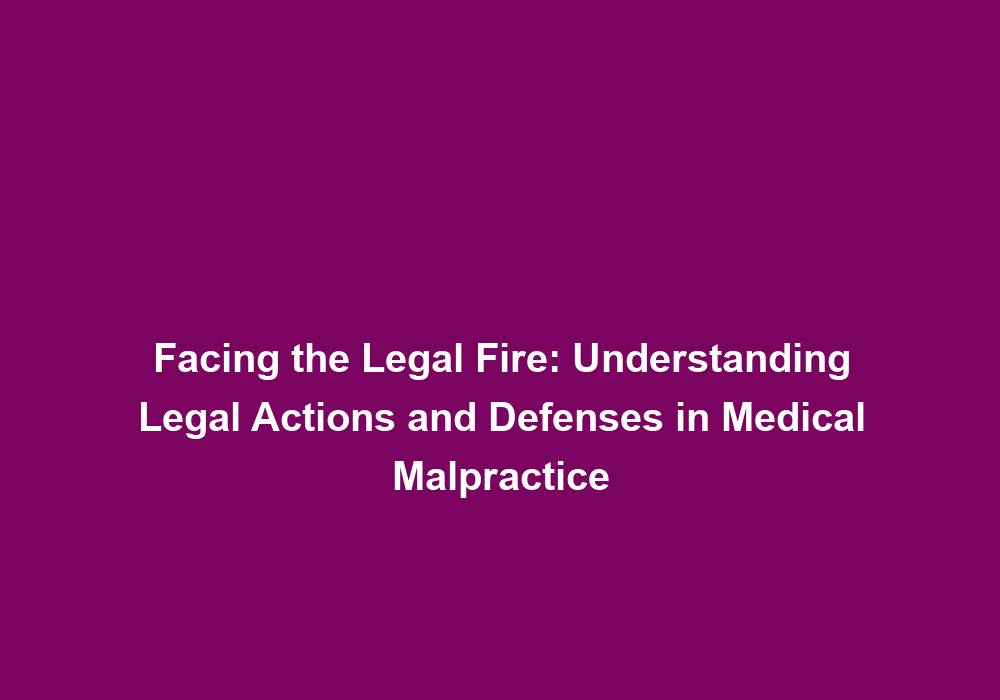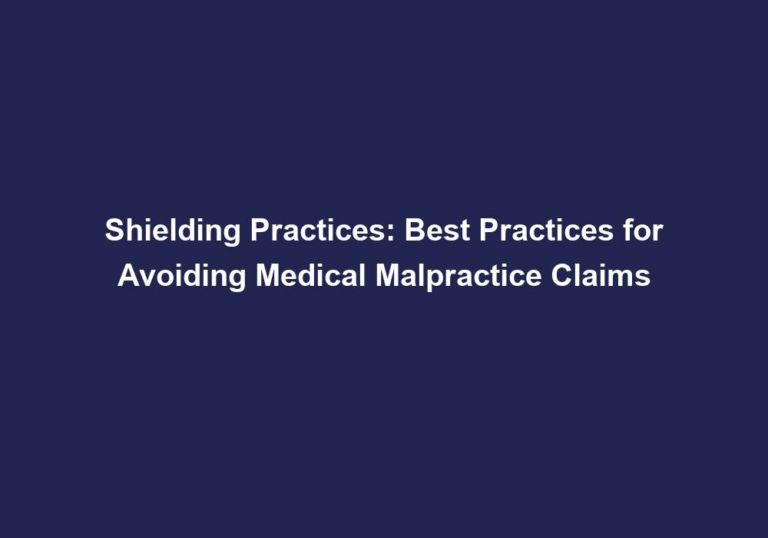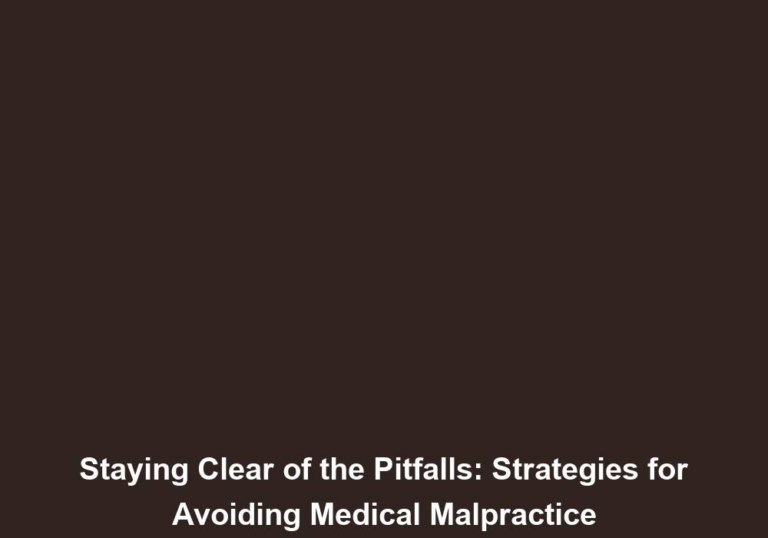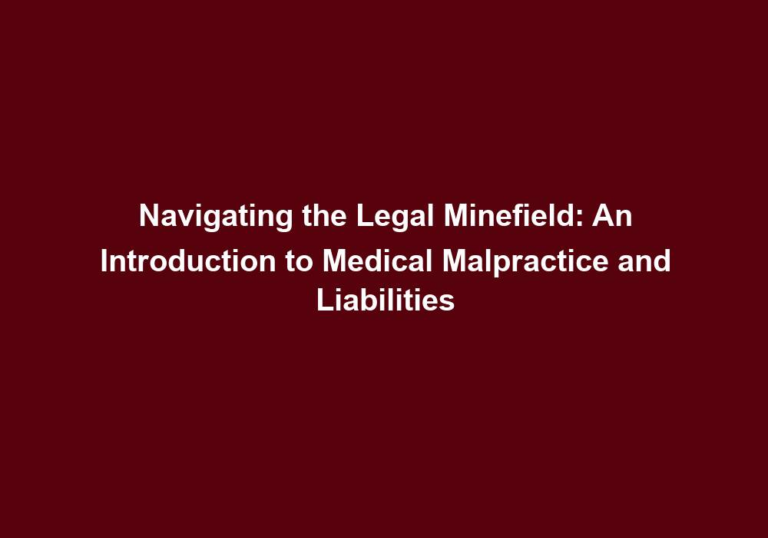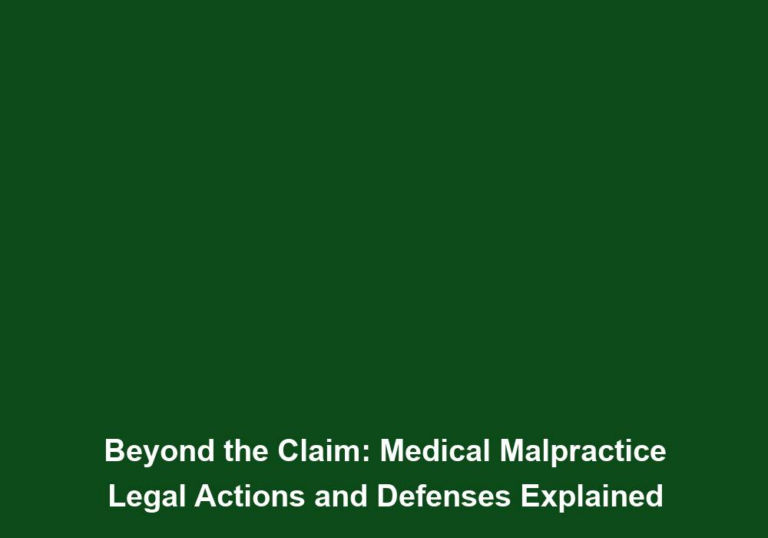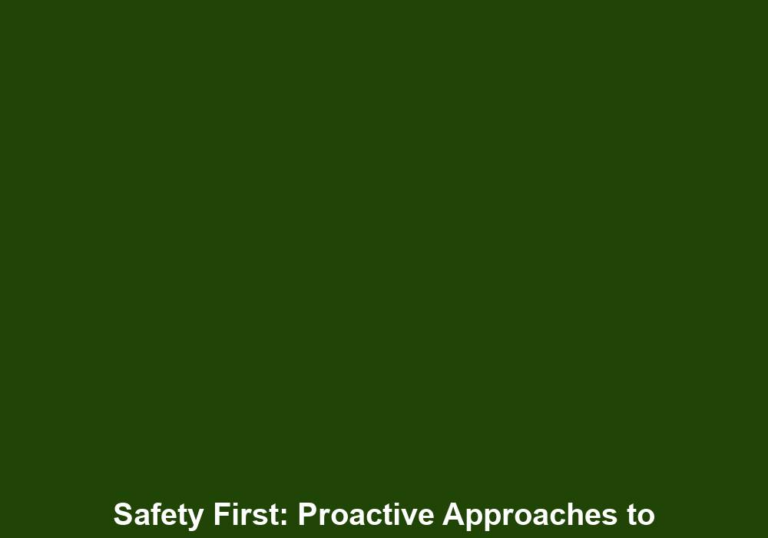Facing the Legal Fire: Understanding Legal Actions and Defenses in Medical Malpractice
Medical malpractice is a distressing reality that can have severe consequences for both patients and healthcare providers. When healthcare professionals fail to provide a reasonable standard of care, resulting in harm or injury to a patient, it can lead to legal action. In this article, we will delve into the world of medical malpractice, exploring what it entails, the legal actions involved, and the defenses available to healthcare providers.
What is Medical Malpractice?
Medical malpractice refers to the negligence or substandard treatment provided by healthcare professionals that results in harm or injury to a patient. This can include errors in diagnosis, treatment, aftercare, or management of a patient’s healthcare. Medical malpractice cases typically arise when a healthcare provider deviates from the accepted standard of care, causing harm to the patient.
Medical malpractice can take various forms, including misdiagnosis, surgical errors, medication errors, birth injuries, and failure to provide appropriate treatment or follow-up care. Each case requires thorough investigation to establish negligence and prove that the healthcare provider’s actions or lack thereof directly caused harm to the patient.
Legal Action in Medical Malpractice Cases
When a patient believes they have been a victim of medical malpractice, they have the right to take legal action against the healthcare provider responsible. It’s important to note that medical malpractice cases can be complex and require extensive investigation, expert testimony, and legal representation to navigate the legal process successfully. Let’s explore the legal actions commonly pursued in medical malpractice cases:
1. Filing a Complaint
The first step in initiating a medical malpractice case is filing a complaint against the healthcare provider. This document outlines the allegations, the extent of the damages suffered, and the compensation sought by the patient. A well-drafted complaint is crucial as it sets the foundation for the legal proceedings.
2. Discovery Phase
The discovery phase is a critical part of the legal process in medical malpractice cases. During this phase, both the plaintiff (the patient) and the defendant (the healthcare provider) gather and exchange relevant evidence. This evidence may include medical records, expert opinions, witness statements, and any other supporting documentation. Additionally, depositions may be conducted, where witnesses are questioned under oath. The discovery phase allows each side to understand the strengths and weaknesses of the case before proceeding further.
3. Expert Testimony
Expert testimony plays a crucial role in medical malpractice cases. Both the plaintiff and the defendant may present expert witnesses who possess the necessary knowledge and experience to provide their opinions on the standard of care provided. These experts can help the court and the jury understand whether the medical professional deviated from the accepted standard of care and caused harm to the patient. Their testimony can greatly influence the outcome of the case.
It is important to note that expert witnesses in medical malpractice cases must be qualified and experienced in the relevant field of medicine. Their opinions should be based on sound scientific principles and supported by evidence. The credibility of these experts can strongly impact the strength of a party’s case.
4. Mediation or Settlement
In some cases, medical malpractice disputes may be resolved through mediation or settlement negotiations. Mediation involves a neutral third party who assists the parties in reaching a mutually agreeable resolution. Settlement negotiations, on the other hand, involve the exchange of offers and counteroffers until both parties reach a satisfactory agreement.
Mediation or settlement can be beneficial for both patients and healthcare providers as they provide an opportunity to resolve the dispute outside of the courtroom. This can save time, money, and emotional stress for all parties involved. However, it is important to carefully evaluate any proposed settlement to ensure it adequately compensates the patient for their damages and losses.
5. Trial and Verdict
If mediation or settlement negotiations are unsuccessful, the case proceeds to trial. During the trial, both sides present their arguments, call witnesses, and present evidence to support their claims. The jury or judge carefully considers the evidence and arguments presented and ultimately reaches a verdict based on the applicable law.
A favorable verdict for the plaintiff may result in the healthcare provider being held liable for damages. On the other hand, a verdict in favor of the defendant may absolve the healthcare provider of any liability. The trial process can be lengthy and emotionally challenging for all parties involved, but it is an essential step in seeking justice and resolution.
Legal Defenses in Medical Malpractice Cases
Healthcare providers faced with medical malpractice allegations have various legal defenses available to them. These defenses aim to challenge the plaintiff’s claim and establish that the healthcare provider acted reasonably and within the accepted standard of care. Here are some common defenses used in medical malpractice cases:
1. Lack of Negligence
One of the primary defenses in medical malpractice cases is to argue that the healthcare provider did not deviate from the accepted standard of care. The defense may present evidence to show that the treatment provided was reasonable and in line with prevailing medical practices. This defense aims to challenge the plaintiff’s claim that the healthcare provider’s actions caused harm.
To establish lack of negligence, the defense may rely on medical guidelines, expert testimony, and documentation of the treatment provided. They may argue that the adverse outcome experienced by the patient was an unfortunate result of the underlying medical condition or other factors beyond the healthcare provider’s control.
2. Contributory Negligence
Contributory negligence is a defense used when the patient’s own actions or negligence contributed to the harm they suffered. The defense may argue that the patient failed to follow instructions, disclosed inaccurate medical history, or ignored warnings, which ultimately led to their injury. By asserting contributory negligence, the defense aims to diminish their client’s liability and shift some of the blame to the patient.
To establish contributory negligence, the defense may present evidence such as medical records, witness testimony, or expert opinions. They may attempt to demonstrate that the patient’s actions were a substantial factor in causing their own harm, thereby reducing the damages they can recover.
3. Statute of Limitations
The statute of limitations is a legal timeframe within which a lawsuit must be filed. Healthcare providers may use this defense to argue that the patient exceeded the allowable time to file a medical malpractice claim. If the lawsuit is filed after the statute of limitations has expired, the court may dismiss the case.
To assert the statute of limitations defense, the healthcare provider must prove that the patient failed to initiate legal action within the prescribed timeframe. This defense is particularly effective when the patient delays in discovering the malpractice or fails to recognize the connection between their injury and the healthcare provider’s actions.
4. Good Samaritan Laws
In some jurisdictions, healthcare providers may be protected by Good Samaritan laws. These laws provide immunity or limited liability to healthcare professionals who provide assistance in emergency situations outside their regular workplace. The defense may argue that the healthcare provider acted in good faith and according to their training, even if the outcome was not as desired.
Good Samaritan laws aim to encourage healthcare providers to provide emergency care without fear of legal repercussions. These laws vary by jurisdiction, so it is important for healthcare providers to understand the specific protections and limitations offered by the applicable laws in their region.
5. Lack of Causation
A key element in medical malpractice cases is establishing a causal relationship between the healthcare provider’s actions and the patient’s harm. The defense may attempt to prove that the harm suffered by the patient was not directly caused by the actions of the healthcare provider but rather by pre-existing conditions or other factors beyond their control.
To assert lack of causation, the defense may present medical records, expert opinions, or other evidence to demonstrate that the patient’s harm was not a direct result of the healthcare provider’s actions. They may argue that the patient had pre-existing medical conditions or that the harm was an unfortunate complication that can occur despite proper medical care.
In conclusion, medical malpractice cases involve complex legal proceedings that require extensive investigation, expert testimony, and legal representation. Patients who believe they have been victims of medical malpractice can take legal action, and healthcare providers have various legal defenses at their disposal. Understanding the legal actions and defenses in medical malpractice is crucial for both patients and healthcare professionals involved in such cases.
*Note: The above article is provided in markdown format for the given title.

